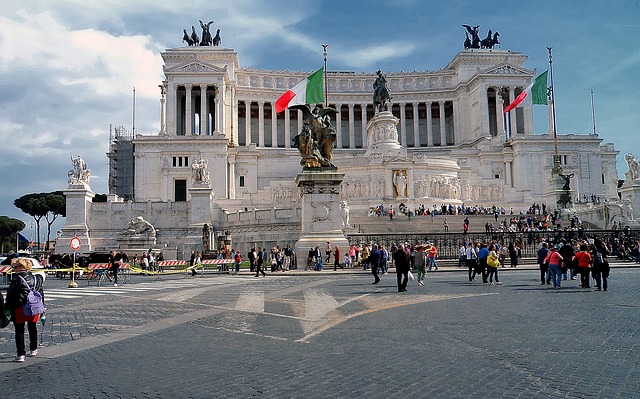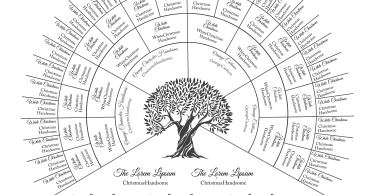Table of Contents
Being Italian, or an American with Italian roots, or Italian ancestry, in the Italian diaspora, has got a lot more to do with choosing Barilla as your favorite brand, knowing that pizza really comes from Naples, or feeling proud to have the same roots as Liza Minelli because she has such a great voice.
Possibly the most interesting thing about the US and Italy in terms of roots, and being rooted in a territory of origin, is that they are clear polar opposites. On the one hand, the European settlement in the US could be described as one of the newest nations in the world today. Whereas Italy is one of the most ancient, with a history that is so complex, rich, eclectic and fascinating, that even if you weren’t Italian, it would be a delight to investigate it.
This is what makes you, as a person with Italian roots, and an Italian history which stretches back into the mists of ancient history, so uniquely interesting. This is the root of Italian ancestry.
Italian Immigration
Most people associate Italian immigration to the US with the Ellis Island immigration (1905 – 1914 approx): 84% which came from Southern Italy and Sicily, where Southern Italians had been disenfranchised by the unification of Italy, had become impoverished, and arrived in the US with a suitcase and $18 – $25 (about $600 today) in hand.
Many were turned back due to illness, or just because they did not make the grade in other ways. Almost half just couldn’t face the hardships and discrimination and left of their own accord. It became known as “L’Isola delle Lagrime” (Island of Tears). After years of research Italian genealogists have confirmed this finding.
For many immigrants, the journey to America became the fulfillment of the Venetian proverb – “The first sin is to be born desperate”
Italians Discovering the Americas
But let’s back up a bit. This was not the first, though clearly the most significant in numbers, the connection that Italy had had with America.
The Italian/American affair began in 1499 – 1502, when Vespucci, an Italian explorer, discovered the Americas. In a poetic sense, therefore, could the immigrants who later arrived at Ellis Island have been considered to be immigrants or re-colonizers? Tongue in cheek, of course!
Other families of note, whose family names are still prominent in the US today, including the Venetian family, Tagliaferro, and the Fonda family.
Perhaps one of the most interesting, from a historical point of view, is Filippo Mazzei, a confidant of President Jefferson and author of the phrase which assumed the equality of all men, which is included in the American Constitution.
Ellis Island – shaped the face of America
Back to Ellis Island, and the immigration which, despite such humble beginning, significantly shaped the face of what America was later to become. To date, 17 million of Americans are of Italian descent. The long list of important influencers amongst this population is well-known by most Americans.
These were often the descendants of these poor immigrants, who arrived poor and illiterate, often to be berated and despised; and yet, who rose to the top, anyway.
How did they do this? Where did they get the “grinto” (courage, determination)? The secret lies in their roots. Ernest Hemingway once wrote this; that every person can write at least one great novel – the story of their own lives. History is essentially about the personal stories of people and an Italian genealogist can help you uncover the stories of your lineage. When your personal story is connected to a history as great as that of Italy, with bloodlines that stretch back to the Etruscans, The Renaissance and the Roman Empire, your personal history could be considered to be a masterpiece of genetic diversity and culture.
Sicilian Italian immigrants
Italian immigrants (many of whom were Sicilian), at face value, looked like a ragtag lot of sad illiterates (more on the question of illiteracy and poverty later); but they knew something which no-one else knew – their history. They were Sicilian and fiercely proud of that.
Taking Sicily as an example, here are some historical reference points:
Sicily was the crossroads for invasions and cultural exchanges by Greeks, Arabs, Normans, Germans, and Jews. Before 1250, women’s rights were defended, as was the environment. Does this sound backward to you?
The cultural patrimony of Sicily, and Italy, in fact, is so rich and diverse, as to be impossible to cover adequately in one article.
Sicily is also particularly interesting because it is a unique instance in the area of genealogical research. This is because the records stretch back to 1500. With the help of an Italian genealogist, you don’t have to be nobility to trace a clear unbroken line of ancestry through one of the many archived resources which have been so carefully kept intact: monasteries, parochial records, land tax records, legal records etc.
Italian Genealogical Heritage
All the other areas also have similar areas of fascination with regard to genealogical heritage. Historically, Italy has only been a homogenous nation for a brief period of time; since the middle of the 19th Century. Before that, it was comprised of separate nation states. Many people still consider this to be the overriding reality of their lives. Their cuisine, language (distinct dialects) and customs, all reflect very specific regional preferences. They feel a strong sense of “campanilismo” (pride for your own town). Even another Italian traveling to that region will feel, to some extent, like an outsider.
What about the nitty-gritty? Do you need a professional Italian genealogist to help you with your search? Is this something you can do alone, or with your family?
This depends. You need to understand the Italian ancestry panorama, and how it works, to better be able to understand what will work for you, and how far back into your history you want to go. However, usually, you can take the search into your own hands, up to a certain point. This can be time-consuming. If you don’t have the time, maybe it would be better to hire a professional Italian genealogist.
This is what a search for Italian ancestry would entail:
Italian Ancestry – An Overview
Italian ancestry and genealogy, in general, is the field of family history study, encompasses various disciplines; including ethnology, onomatology, and even heraldry. To be a good genealogist, you have to be not only a competent historian but also an adept sleuth. Since a knowledge of specialized fields, like languages, kinship, canon law and paleography are often essential; a professional genealogist often has to refer to colleagues who work within these disciplines.
As an Italian descendant, your most important point of departure is to know where, and who, to refer to, in search of your family roots – who can best help you.
Italian ancestry is a complex area of genealogical study and research. Many authors and experts do not agree on every issue. One of the biggest traps not to fall into is to go in search of stereotypes. Broad statements about the disparity of wealth between the North and South, might not be useful in your particular search. For instance, Naples was, in fact, the wealthiest city until its annexation to the Kingdom of Italy (1860). At that time the second wealthiest city was Palermo. The fact is that at this time, the North was poorer than the South; most immigrants were Northerners.
Northerners and Southerners Italian Ancestry
Another common stereotype which can be wrong is the conception of the typical blond Northerner and the dark-haired Southerner. Many Southern Italians are blond or red-haired, with light eyes, because of the Longobard and Norman influences. The notion that all immigrants were illiterate and impoverished, is also not correct. This is helpful to know because your family of origin might not have belonged to that class. Some had become impoverished due to politically motivated setbacks; however, many were skilled middle-class craftsmen and merchants. Neither were many really illiterate but simply considered to be illiterate, because they could not speak and write English.
Neither were 19th Century Italians landless peasants. Most owned a bit of land. This is useful to know because the census and land records can be investigated. This is why tracing your roots in Italy is not always simple. However, there are some simple first steps you can take.
What can you do?
A fundamental first step is a knowledge of Italian; since most of the records will be in either Italian or Latin. The quest becomes more difficult, if, for example, your origins are in Piemonte, and the records are in French, or your family was from Tirol, and the records are in German.
Start in the present and work back to the past. Do you have elderly family members who can give you information? Do you have old photos and memos? Understanding the ethnological norms is also often quite useful: certain regions named their children and dressed certain ways. These kinds of records, even photographic, can be very useful. Having the maiden names of family members can help you do a more profound search.
Once you have accurate first-hand accounts from elderly family members, it is easier to research the official record or ask your Italian genealogist to locate a record for you. It’s also easier to take the first step and to draw a family tree from the information you have gleaned.
Joining a site like ancestry. It puts you in a good position to be contacted by people with similar interests. You never know what you could discover along the way.
Surnames are also a very good guide in Italy for regional provenance. A guide like “Dizionario Ragionato dei Cognomi Italiani by Rizzoli is very useful resource.
If your family has kept original documentation, birth certificates, etc; it’s much easier. If not, you will have to resort to the Italian authorities or ask your Italian ancestry expert to contact the Italian authorities. This can be difficult; but here is a guide, if you feel you can do this alone.
Simply contacting families randomly in the village where your family came from can be time-consuming and confusing. Making contact with them, establishing a relationship, and all the other niceties; only to reach a dead end, can be frustrating – if they are even willing to become involved.
What if you don’t have any of these records? How easy are they to obtain?
First step – American records. You can consult microfilmed immigration records, steamship passenger lists, and old census records. There is a free online search available on Ellis Island.
Italian Records
Acts of birth, baptism, marriage, and death would be the most important primary source. If you know what commune (municipal area) your family originates from, you can contact the Ufficio Anagrafe and ask for the “certificato di stato di famiglia”. This provides extensive information about your family if they immigrated after 1880.
Contacting the vital statistics office in a particular commune is not always simple, and getting information about a specific ancestor might not get results. They might give you an act of birth extract if you give them precise information regarding names and birth dates; but they will not involve themselves in detailed research projects. You will also need to be able to speak Italian to do so. They will not allow you, as a third party, to request records of a living relative. The privacy laws exclude this kind of search.
Where these primary records are missing, you can consult parochial records, which date back prior to the 1800’s. However, accessing these is not easy at all. Most of these have not even been microfilmed. The other point is that nay request can take up months of bureaucratic time, and to and fro communication, necessarily in Italian, before it could prove to be fruitful. More often than not priests are just too busy and not willing to get involved. if you’re lucky, a friendly, polite explanation in Italian and a generous donation might get some response.
Secondary records can be consulted in the absence of primary records. These could be military service records, land and census records, etc.
A note about source documents
Both microfilm and original documents can vary according to the region. To be able to discern them correctly might need expert help. For example, certain Sicilian records might need a knowledge of Greek, Lati, and native Sicilian elements. However, most records are written in either Italian or Latin.
Sometimes site is not possible to obtain documents for various reasons, particularly with regard to original records. Photocopying of archival material might not be allowed, or there might just not be a photocopier. Remember, this is Italy! The food is great, but the bureaucracy is inefficient and unwieldy.
Sound complicated and time-consuming? It is. That’s why many people do as much as they can, and then consult with professional service.
At Record Click we have many Italian genealogist who are ready to assist you with any roadblocks that you might be facing. Consider hiring a professional genealogist from Record Click.







